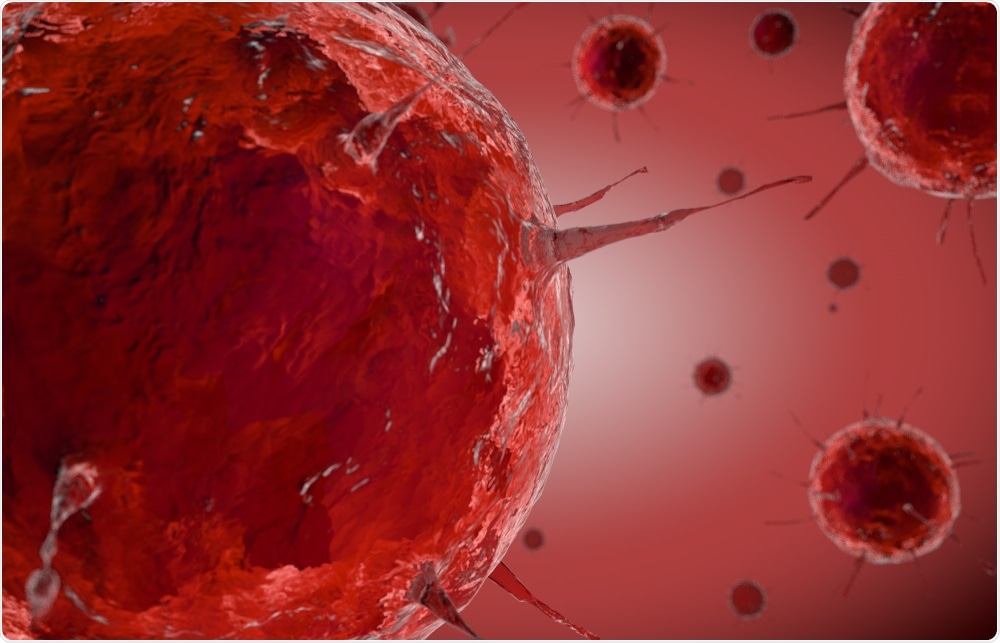A new study has provided further evidence that taking antiretroviral therapy (ART) prevents HIV being transmitted between gay couples – a finding that researchers are calling a powerful message that should be more widely known.
 Necula Valentin Andre | Shutterstock
Necula Valentin Andre | Shutterstock
Our findings provide conclusive evidence for gay men that the risk of HIV transmission with suppressive ART is zero.”
Alison Rodger, Study Author from University College London.
For the study, Rodgers and colleagues followed 972 “serodifferent” gay male couples − where one partner was HIV-negative and the other was HIV-positive but taking ART to suppress the virus.
The HIV positive men had been taking the ART for an average of four years before the study began. This had made the virus undetectable in their blood, which is defined as fewer than 200 “copies” of HIV’s genetic material per ml of blood (copies/ml).
In the majority of cases, people reach this level of undetectability after having taken the ART for six months.
Over an eight-year follow-up period between 2010 and 2017, the couples reported having sex without using condoms a total of 76,088 times.
‘Undetectable equals untransmittable’
As recently reported in The Lancet, there were no cases of HIV being transmitted, which the researchers say is due to ART reducing the virus to such low loads in the body.
They also estimated that the treatment probably prevented around 472 cases of HIV being transmitted.
Fifteen men among the 972 couples did become infected with HIV, but genetic screening revealed that none of the cases of transmission involved viral strains that could have been acquired from their main partner.
The researchers say the study provides proof that using ART to suppress HIV to undetectable levels stops the virus being passed on, via sex, irrespective of what type of sex the couples have.
Dr. Ford Hickson from the London School of Hygiene and Tropical Medicine, also says the study confirms that if people suppress their HIV with ART, they "cannot pass their virus to other people during sex, whatever kind of sex they have".
Experts say the key take-home message about HIV for everyone should be “undetectable equals untransmittable.”
Previous research has also shown that the risk of HIV transmission between heterosexual couples when one person is taking ART is zero, which prompted the organization UNAIDS to launch its undetectable = untransmittable (U=U) campaign.
Our findings support the message of the U=U (undetectable equals untransmittable) campaign, and the benefits of early testing and treatment for HIV.”
Dr. Ford Hickson
The findings also follow results from an earlier phase of the study which assessed the risk of HIV transmission risk among serodifferent heterosexual couples in the same circumstances. That study also found zero risk of transmission.
“Our results provide a similar level of evidence on viral suppression and HIV transmission risk for gay men to that previously generated for heterosexual couples and suggest that the risk of HIV transmission in gay couples through condomless sex when HIV viral load is suppressed is effectively zero,” write Rodgers and team.
‘Tackling the stigma’ behind HIV
Since the AIDS epidemic began in the 1980s, more than 77 million people have transmitted HIV, with almost half (35.4 million) dying from AIDS.
Researchers say that in the fight against HIV, the number of people dying from AIDS per year is falling and the number of people taking ART is rising. However, the incidence rate for new infections is still high - at around 1.8 million new cases globally each year.
Rodger says that anal sex is known to be associated with the greatest risk of transmission, but that the current study shows that gay men can be reassured.
This powerful message could help end the HIV pandemic by preventing HIV transmission and tackling the stigma and discrimination that many people with HIV face.”
Alison Rodger
She is calling for anyone living with HIV to be able to have access to clinical testing and effective treatment.
Chief executive of the National AIDS Trust, Deborah Gold, says more needs to be done to spread the message to healthcare workers and the general public: "There needs to be a much better understanding of how HIV is and isn't transmitted, and the fact that treatment stops transmission, in the NHS and beyond. We think this is vital to addressing stigma."
What is antiretroviral therapy (ART)?
ART is a combination pill that people can take daily to prevent the HIV virus replicating in the body. It cannot cure HIV, but it reduces viral load to a level that is undetectable in the blood.
Most individuals take the pill once a day, but depending on a person’s specific health requirements, some people take up to four tablets per day. Anybody with HIV is advised to start ART immediately, as soon as they have been diagnosed.
In the UK, 98% of individuals who have been diagnosed as HIV-positive are receiving ART and 97% of those have viral loads that are undetectable, meaning they cannot transmit the virus to others.
Medical director at Terrence Higgins Trust, Michael Brady says: "The study has given us the confidence to say, without doubt, that people living with HIV who are on effective treatment cannot pass the virus on to their sexual partners.”
"This has an incredible impact on the lives of people living with HIV and is a powerful message to address HIV-related stigma,” he concludes.